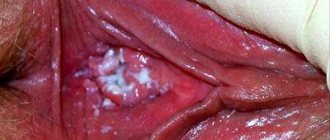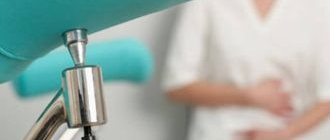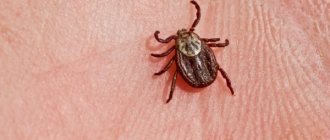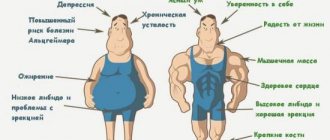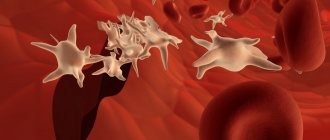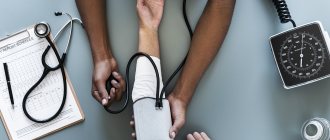Hirsutism is excess hair growth in women in androgenic zones - on the face, back, chest, abdomen, hips, that is, according to the male type (in men, therefore, the term hirsutism is not applicable). In turn, hypertrichosis is an increased growth of vellus hair, which manifests itself not only in androgen-dependent areas, occurs in both men and women and most often makes itself felt immediately after birth.
Hirsutism, like hypertrichosis, is not only a complex cosmetic problem, but also a disease, an indicator of serious hormonal imbalances in the body and other possible, no less serious, health problems. That is why these diseases require careful diagnosis and subsequent treatment.
Medical - a clinic where they help in the diagnosis and treatment of various diseases, including dermatological ones. In each specific case, the treatment regimen is developed individually, taking into account the characteristics of the patient’s body, which allows achieving the desired results.
Causes of hirsutism in women
Among the main reasons for the appearance of hirsutism in girls are:
- the presence of a genetic predisposition. In this case, the constitutional form of the disease develops. It arises due to the large number of hair follicles initially located at the genetic level;
- climacteric condition. After the completion of menstrual function, the ovaries cease to perform their main function of producing estrogen. As a result, androgens (groups of steroidal male sex hormones) accumulate in the body, which do not turn into estrogens;
- pathology of the ovaries. Among the pathologies that affect the ovaries, we should highlight diseases that have different causes and mechanisms of action, but have the same clinical manifestations in the form of hirsutism. Among the most common pathologies are: cystic changes in the ovaries;
- benign or malignant neoplasms (arrhenoblastomas, adrenal tumors, masculinizing tumors and luteomas);
- Itsenko-Cushing syndrome;
- streptomycin;
Hirsutism: what is this disease?
If a woman experiences malfunctions in the endocrine system, then her body hair begins to grow rapidly - the stomach, chest, back, ears, nipple areolas, and face are the most affected. This happens because the woman’s body begins to produce more hormones, which should predominate in the male half of humanity, but female hormones become scarce, and in this case, the hair follicles begin to function very actively.
Hirsutism in the fair sex is not a common occurrence. According to medical statistics, the disease occurs in approximately 5% of the female population of the planet. Ladies have to deal with unpleasant manifestations all their lives, taking medications, using all kinds of expensive cosmetic products and even turning to surgeons.
Men cannot have this disease. In relation to representatives of the stronger half of humanity, it is applicable to use the word hypertrichosis, and not hirsutism. Hypertrichosis is a disease in which a woman experiences excess hair growth in different parts of the body, including those where hair growth does not depend on the amount of androgen secreted by the body. This disease can develop in both representatives of the stronger half of humanity and women, and hirsutism is an exclusively female pathology.
If hirsutism has developed to a very severe stage, then the woman, in addition to hair on the skin, also has other external signs of a male body:
- the voice becomes rougher;
- hair falls out on the head;
- breasts begin to shrink;
- and the clitoris, on the contrary, increases;
- acne appears on the face.
Next, we will describe in more detail why a woman can develop hirsutism, how it will manifest itself and how to treat it.
Symptoms
The main complaint with which people seek medical help is male-pattern hair growth in women. Instead of light vellus hair, a more rigid structure and increased pigmentation are formed. Typical places for growth are areas in the face, areola of the mammary gland, abdomen, inner thighs, buttocks (see photo above).
Hair greasiness increases. On the part of the skin, an increase in sebum production begins to worry; alopecia and acne appear in typical areas of hair growth. Hirsutism in girls begins to appear during puberty.
Signs of hyperandrogenism such as virilization gradually appear (photo below). There is an appearance of male outlines, this is an increase in muscle mass, baldness in the temple area, a decrease in the size of the mammary glands, and a predominant deposition of fat in the area of the anterior abdominal wall. The voice gradually becomes rougher.
Virilization
The genitals begin to change:
- there is a reduction in the labia;
- increase in the size of the clitoris;
- the appearance of severe dryness on the vaginal mucosa.
A typical manifestation of hirsutism is menstrual dysfunction . Delays gradually appear until they stop completely. Discharge may be scanty with occasional breakthrough bleeding. Severe pain appears in the groin areas and during sexual intercourse, associated with an increase in the size of the ovaries. Women of reproductive age develop infertility , which may be irreversible.
Hirsutism in children is a rare manifestation.
Similar pathologies
When making a diagnosis, it is necessary to differentiate hirsutism from hypertrichosis and virilization.
Hirsutism is manifested by the following features:
- The presence of hair above the lip, on the ears, chin, cheeks, chest, abdomen, thighs (in androgen-dependent areas).
- The presence of partial signs of virilization (acne, irregular cycle), signs of masculinization (low timbre of voice, increase in muscle mass, increase in the size of the clitoris). Often all these symptoms are caused by an androgynous tumor.
- Vellus hair turns into coarse shaft hair.
Hypertrichosis is characterized by excess hair growth in androgen-independent areas, that is, where a certain amount of hair normally grows in both sexes. Often depends on ethnicity and age.
For example, leg hair below the knees is natural.
With an increased amount of vegetation in this area, we can talk about hypertrichosis. The presence of hairs in the ears of women is hirsutism.
With virilism, in addition to signs of hirsutism, acne is observed, the menstrual cycle is disrupted, there are symptoms of masculinization (low voice, increased muscle mass, bald patches appear on the forehead, the clitoris becomes enlarged, libido increases).
Types and stages of the disease
To assess the degree of hair growth, a special visual rating scale is used, which is used to determine the sum of the points obtained. Based on their sum, the degree of development of hirsutism is determined. For hirsutism:
- from 1 to 7 degree of hair growth is considered normal;
- from 8 to 9 degree is the border between normal and excessive;
- from 12 the patient is diagnosed with hirsutism.
Clinical types of hirsutism:
- neuroendocrine;
- dermatological;
- Iatrogenic.
Types of association of the disease with other symptoms:
- hirsutism itself;
- hirsutism with a clinical picture of aggravated hyperactive piloseborrheic complex (acne, acne);
- hirsutism and ovulation disorders;
- hirsutism and virilization.
Maintaining a Healthy Weight
A healthy weight helps solve many medical problems, including eliminating or reducing the symptoms of PCOS
Losing excess weight can significantly improve the condition of the reproductive system, and this is especially true for those women who suffer from polycystic ovary syndrome (PCOS). Losing weight also reduces your risk of heart disease and makes diabetes easier to manage. It may not directly affect hair growth, but maintaining a healthy weight is one of the main tools for treating PCOS naturally. In some cases, women with polycystic ovary syndrome simply need to stay in good physical shape to control the symptoms of the disease. However, sometimes it is necessary to combine maintaining a healthy weight with medication treatment.
USEFUL INFORMATION: How the procedure for curettage of a polyp in the uterus is carried out, reviews from women
Tips for fighting obesity naturally
Follow a diet that helps you lose weight and keep your body healthy in the long run. Your daily diet should include foods rich in fiber, lean meats (fish and chicken), healthy fats (coconut oil, olive oil and fish oil)
In addition, we should not forget that it is better to consume food in small and frequent portions.
It is important to remember not only the foods to eat, but also the foods to avoid. The latter include foods high in sugar, fat and sodium.
In general, processed foods, baked goods and fast foods are empty calories.
Physical activity. Increasing the level of calories you burn relative to the level you consume creates a calorie deficit, which helps you lose weight. Find activities that make you happy and do them for at least a few minutes every day. To easily incorporate exercise into your daily life activities, you can use the following tips:
- leave your car away from grocery stores or your place of work;
- use stairs instead of elevators;
- do yard work, practice daily cleaning, or simply dance when you are in the house;
- find a friend who has similar problems and can engage in physical activity with you;
- After dinner, take a walk with your spouse, child, or dog.
- Reduced stress levels. Severe and prolonged stress can lead to excess weight gain and difficulty losing weight. Set aside time every day for activities that bring you pleasure. This could be talking with friends, hobbies, yoga, listening to music or blogging.
- Try DASH (dietary approaches to stop hypertension). Researchers found that women with polycystic ovary syndrome only needed to adhere to DASH for eight weeks to significantly lose weight and improve other health indicators. This type of diet involves calorie restriction and consists of approximately half of the diet being complex carbohydrates, 18% protein and 30% fat. DASH involves eating plenty of vegetables, fruits, whole grains, low-fat dairy and limiting intake of processed grains, saturated fat and cholesterol.
Diagnostics
Identification begins with a conversation between the doctor and the patient. The complaints, the time of their occurrence and their probable cause are clarified.
Of great importance in diagnosis is the nature of the menstrual cycle, its regularity, time of establishment, the presence of pregnancy and childbirth, because this is a condition that quickly affects the reproductive system.
An assessment of the appearance is carried out, identifying areas of excess hair growth and its intensity.
Help the doctor more accurately assess the state of hair development; for this, several weeks before the visit you should not use hair removal methods. In addition, you should pay attention to other secondary sexual characteristics.
The fundamental methods for making diagnoses are laboratory and instrumental diagnostics. It is carried out for all women with identified hirsutism.
Of the laboratory methods, which are very diverse, for this pathology we can limit ourselves to:
- blood test for total testosterone levels . Normally, its concentration should be in the range from 0.24 to 2.7 nmol/l. If the concentration increases, a tumor process in the ovaries should be excluded, and if the concentration decreases, take medications from the group of combined contraceptives or prednisolone.
- dehydroepiandrosterone sulfate . One of the metabolites of androgen metabolism, the concentration of which should be in the range from 2700 to 11000 nmol/l. An increased amount indicates excessive secretion of the substance in the adrenal cortex. In addition, this may be a tumor process in the adrenal cortex or long-term treatment with drugs such as dexamethasone.
- androstenedione assessment . Its concentration normally ranges from 75 to 205 n/dl. An increase may be a manifestation of ovarian pathology.
- determination of 17-hydroxyprogesterone . An increase in level above 8.7 zero/l is due to adrenal hyperplasia.
- cortisol study . If the level of the indicator does not go beyond 138-635 nmol/l, this indicates the possible presence of Itsenko-Cushing syndrome.
- assessment of gonadotropins . Great importance is paid to the relationship between the levels of luteinizing and follicle-stimulating hormones. Its ratio should not be more than 2.5.
These hormones are essential for not only identifying the disease, but also determining how to treat hirsutism.
Additional tests may also be prescribed depending on the presence of concomitant pathology.
Instrumental diagnostic methods include:
- ultrasound examination , which examines the ovaries and adrenal glands. The method is widely used due to its non-invasiveness and special training. If a Doppler unit is available, the degree of blood flow must be assessed;
- in the event that there is a suspicion of pathology of the pituitary gland or hypothalamus, it is necessary to conduct an X-ray examination to assess the condition of the sella turcica ;
- , computed tomography may be used ;
- If a tumor process is detected, it is necessary to perform laparoscopy .
Forms and types of disease
- Constitutional. In this case, an increase in the amount of facial hair is usually associated with physiological changes, including age-related ones, as well as with hereditary characteristics. It is noteworthy that laboratory blood tests often fail to identify elevated androgen levels. For these women, this condition is a natural behavior of the body.
- Idiopathic. This is what a diagnosis looks like when it is impossible to accurately determine the cause of the disease. The study of blood serum reveals high levels of free testosterone.
- Exogenous. It is associated with the need to introduce androgens into the body. For example, in the treatment of certain diseases.
Treatment of hirsutism in women
Hirsutism can be treated using various methods. Among them, the most effective are medicinal and surgical. In the event that there is severe hirsutism, traditional methods may not be effective.
In women, treatment must be carried out especially quickly to avoid problems with reproductive function, which leads to infertility.
Drug treatment
Since medications form the basis of treatment for hirsutism, they should be aimed at eliminating the main cause that caused the pathological condition. Among them:
- Oral combination drugs . In addition to the minimum dosage of estrogens, there is an increase in the dosage of hormones that have an antiandrogenic effect. Temporary use may lead to a decrease in the severity of hirsutism. Thanks to treatment, spontaneous pregnancy may occur. These drugs include the following drugs: Zhannina;
- Diana—35;
- Jess plus.
- Prednisolone;
- Spironolactone;
Antiandrogen drugs for women for hirsutism are limited in use due to possible contraindications. They should not be neglected, as life-threatening conditions may arise.
Surgery
When tumors of both malignant and benign courses are detected, surgical treatment is indicated. It comes down to either complete removal of the organ along with the tumor (this is a necessary measure for a malignant process at any level), or partial resection. Partial tissue removal is indicated in cases where tumor cells are hormonally active. Complete removal of an organ can lead to a number of complications from other body systems, especially the pituitary gland or adrenal glands, so removing part of the hormonally active cells can compensate for the condition.
If the gland is completely removed, lifelong hormonal therapy may be prescribed.
Depilation
This is one of the treatment methods that helps a woman get rid of the psychological component of this disease. After removing unwanted hair, a woman shows inner confidence and depression decreases.
The methods listed below are only a temporary measure; there is no way to completely get rid of hair. Among the main methods are:
- photoepilation;
- laser removal;
- bioepilation;
- medicinal methods;
- shaving.
Female-type hair growth is not aggravated in this case.
Traditional methods of treating hirsutism
The use of traditional methods cannot always change hormone levels. In addition, the use of these funds can lead to complications in other organs and systems. But, herbal preparations can be used in local form, reducing cosmetic defects.
Among the most popular methods are:
- Juice of unripe walnuts . To prepare the product, you should cut the young fruits, after the juice appears on the cut, apply it to the area of excess hair. To achieve the effect, a single application per day is sufficient; the course of therapy lasts an average of 10 days. In the initial forms, one course is sufficient.
- Henbane . To prepare the decoction, you need to mix 150 mg of dry herb with a liter of purified water. The resulting mixture is boiled, evaporating the contents, until 200 ml of the finished decoction is obtained. This ensures the creation of effective concentration. While waiting for the solution to cool, it must be filtered. After which it is applied to the lesions where there is excess hair growth twice. The course of therapy lasts on average 5 days. Do not exceed the frequency of application due to possible poisoning.
- A mixture of lemon and sugar . One ripe lemon is squeezed out and the resulting juice is mixed with 3 tablespoons of sugar and 200 ml of water. The resulting mixture is simmered over low heat until it begins to thicken. After which the mixture is cooled and applied to the skin. After application, leave the mixture for 10 minutes. Subsequently, the skin is cleansed with warm water.
Traditional treatment will not completely eliminate male pattern hair in women.
Treatment with folk remedies
To provide her body with the necessary amount of phytoestrogens, a woman should pay attention to:
- boron uterus;
- soy-containing products;
- Red clover;
- liquorice root;
- linen;
- hop.
Regular inclusion of them in combination or separately in your diet as an ingredient in tea, decoction or dish will help in the fight against the disease.
In the fight against hair growth, traditional medicine suggests using the method of gradual lightening and thinning of hair. Hydrogen peroxide or green walnut juice can be used for this.
Complications
Since the disease is often endocrine in nature, i.e. its appearance is associated with disruption of the endocrine glands. With a long course and lack of treatment, type 2 diabetes mellitus occurs, this will be caused by tissue insulin resistance.
In women of reproductive age and adolescents, hirsut syndrome left untreated poses the greatest danger, causing polycystic ovary syndrome. Long-term polycystic disease leads to depletion of the supply of follicles, which subsequently causes infertility.
Also, cycle irregularity manifests itself in the development of difficult-to-stop uterine bleeding or long-term delays in menstruation with dysfunctional uterine bleeding.
Advice and recommendations from experts
- Often women try to get rid of unwanted hair on their bodies in an emergency way. One of them is shaving. It's not worth taking that risk. Shaving certainly irritates the skin, causing the growth of coarser and thicker hair. At the same time, their growth rate will be noticeably higher compared to those already removed. In the future, you will have to make a lot of effort to get rid of them.
- Plucking thick hair can leave unsightly scars on the skin and also provoke irritation of neighboring areas of the skin. Do not forget that this method is good for a small amount of hair.
- No method of depilation or hair removal will help cure hirsutism because the appearance of hair is just the tip of the iceberg. Without eliminating the cause itself, it is foolish to count on a positive result and the absence of complications.
- None of the treatment methods is capable of such a high result as an integrated approach. Combining traditional medicine with natural remedies helps reduce the side effects of chemicals.
- To remove hair from this disease, it is recommended to invest in electrolysis. The essence of the method is to apply electric current to each hair follicle. The hair itself falls out and its further growth is not possible. At the moment, this is the only method that allows you to get rid of hair forever. In severe cases of the disease, it is extremely difficult to cope with dense vegetation in any other way.
Prevention
For the hereditary form of hirsutism, there are no specific preventive measures. For neurogenic causes, if the first manifestations are detected, it is necessary to seek help from specialists and promptly eliminate or correct the cause of this pathology.
When prescribing medications that can lead to the appearance of a symptom such as excess hair growth, it is therefore necessary to consult with your doctor for the possible use of drugs aimed at preventing growth.
You should not attempt independent hair removal at the beginning of specific therapy. This can make the situation worse, causing more hair growth.
Cosmetology
Drug treatment is aimed at eliminating the cause of the disease, and as a result, stopping the growth of new hair. Various secrets of cosmetology help to cope with existing ones.
To get rid of unwanted hair, women use bioepilation using wax, lightening, and chemical treatment:
- Chemical depilation can cope with only moderately expressed signs of the disease. It remains powerless against thick and very coarse hair. Various depilatory creams are commonly used to treat areas of skin on the face. That is why you should not neglect conducting a preliminary sensitivity test. With hirsutism, it is absolutely contraindicated for a woman to use chemicals that cause an allergic reaction.
- Lightening and bioepilation are often traumatic methods of hair removal for the skin. If you have sensitive skin, it is recommended not to resort to such radical methods.
- Electrolysis, laser hair removal and photoepilation. Each of these methods means a direct impact on the hair follicle in order to stop further hair growth. The existing hair dies. Beauty salon specialists, financial capabilities and their own preferences, combined with the presence of contraindications to one or more procedures, help a woman choose a method that is suitable for her.
Forecast
Hirsute syndrome has a relatively favorable prognosis. There are no serious complications that could be a direct cause of mortality. Only the appearance of diabetes mellitus can significantly change the standard of living, due to the introduction of a diet and constant treatment.
A woman may experience significant problems associated with psychological discomfort. These include disruption of contact with the opposite sex, destruction of marriages, etc.
Treatment of hirsutism can be lengthy and does not always produce an initial effect. The minimum period required to achieve the effect is a year or six months. It should be understood that even properly selected therapy will not be able to relieve the patient from the problem of excess hair growth. It only slows down the growth of old ones and prevents the appearance of new foci of excess hair.
Self-treatment at home
A woman will not be able to cope with the disease without consultation and direct supervision of a specialist. At home, it can only ensure the effectiveness of other treatment methods.
To do this she needs:
- pay attention to your own weight, seriously begin to adjust it if you have extra pounds. Diets that exclude easily digestible carbohydrates from the diet are extremely effective.
- give up nicotine and alcohol in favor of the natural functioning of all body systems.
How does hair grow?
Each hair consists of a root enclosed in a special hair sac (follicle) and a shaft. In total, there are about 50 million hair follicles on the human body, and there are only one hundred thousand of them on the scalp. We also have areas where there is no hair at all (we are talking about the lips, palms and soles of the feet). There are vellus hair (thin, delicate, short and light hair in children before puberty) and terminal hair (longer, thicker, darker hair in the armpits and pubic area in women). Male sex hormones (androgens) have a pronounced effect on the process of hair growth during the reproductive period of a woman.
Traditional medicine most famous recipes
Now let’s look directly at treatment with folk remedies - doctors usually do not discourage their use, but recommend undergoing an examination to identify the main cause of the pathology, as well as using home methods along with the main treatment. As an addition, most often used:
- A decoction and tincture based on dope, which must be thoroughly rinsed before cooking. You can use both the above-ground and underground parts of the grass - you should take several plants and fill them with a liter of boiled water. Then the mixture is put on the fire, the moment of boiling is waited and another 50 minutes are counted from there, during which the broth is slowly cooked. After cooling, the product is filtered, the resulting medicinal liquid is wiped onto the skin after hair removal; this procedure must be carried out in the morning and evening hours. If irritation appears on the skin or another negative reaction of the body is noticeable, you should stop using dope.
- Datura tincture is prepared as follows - 100 grams of the plant must be poured with 500 ml of vodka, kept in the dark for two weeks, then lubricate the hairs on the body with the resulting liquid. The course of treatment is 21 days. The product has a contraindication - if you have glaucoma, the tincture should not be used.
- Pine nut shells are also popular; two liters of water and two kilograms of shells are used to prepare the decoction. After mixing the two ingredients, the container is placed in the oven and simmered for 60 minutes. The initial volume should be reduced by 50%. The broth is cooled, filtered, and used as a means for wiping areas with increased hairiness. The decoction is quite dangerous - it must not be allowed to get into the mucous layer of the mouth and eyes.
- Another popular drug that acts as a hair growth stopping compound is prepared from the brown peel of horse chestnuts in the amount of one glass. The ingredient is poured into 500 ml of boiling water and kept on fire until 3/4 of the liquid has boiled away. The residue is filtered and cooled, then used to wipe problem areas.
- Let's see how to stop body hair growth using lemon juice. To do this, add juice from half a citrus fruit to a glass of water, and add 25 grams of granulated sugar. The composition is boiled over low heat until 50% of its volume has evaporated, then the product is cooled and problem areas are lubricated. The medicinal liquid must be kept on the skin for no more than two minutes, then rinsed with boiled water.
USEFUL INFORMATION: Use of mumiyo for infertility
Medicinal compositions for depilation
There are many recipes for depilation that answer the question of how to get rid of hair on the stomach, above the upper lip, and other areas of the body at home:
- You need to take ten pieces of refined sugar, dissolve them in three large spoons of water, add citric acid to the liquid at the end of a knife. Then the composition is boiled over low heat until it acquires a golden hue. Without allowing the mixture to cool completely, it is applied to the hairs, then quickly torn off.
- You can prepare the composition in a different way - pour a small spoon of sugar with half a small spoon of water, keep on fire until the sugar is completely dissolved. After this, add juice squeezed from a whole lemon to the liquid removed from the stove, put it back on the fire and keep it there until the liquid turns dark brown. Next, place a small spoon of the mixture on a plate to harden, sprinkling it with water during the process. The composition is thoroughly rubbed into areas of increased hair growth for two hours, after which it is washed off with heated water. After such procedures, the hairs lighten and become thinner, and their growth slows down.
- Another completely harmless recipe suggests mixing 5 grams of glycerin with sodium sulfate and starch in an amount of 9 grams each, and adding 80 grams of water to the mixture. The resulting mass should be applied to problem areas. The downside of therapy is that it takes quite a long time. Plus - a positive effect can be noticed in the second week of using the recipe.
- You can mix 25 grams of starch with the same amount of zinc oxide and add 50 grams of barium sulfate and a little water to the mixture. The resulting composition is applied to the problem area cleaned of contaminants and kept on the skin for 6 minutes. As a result of the procedure, hair loss or lightening is observed.
- To lubricate the area above the upper lip, five drops of ammonia are dissolved in a small spoon of peroxide. Use the composition at least three times a day, wash off the product after drying the skin with cool boiled water with the addition of lemon juice. You should not wipe the skin; after it dries, apply a layer of baby cream on top. The hairs gradually become discolored, they become thinner and disappear over time.
- To get rid of hirsutism, add a big fly in the ointment to a glass of juice obtained from unripe walnuts. The container is closed and left in the dark and warm for three weeks. Then the composition is rubbed daily into areas of increased hair growth.

